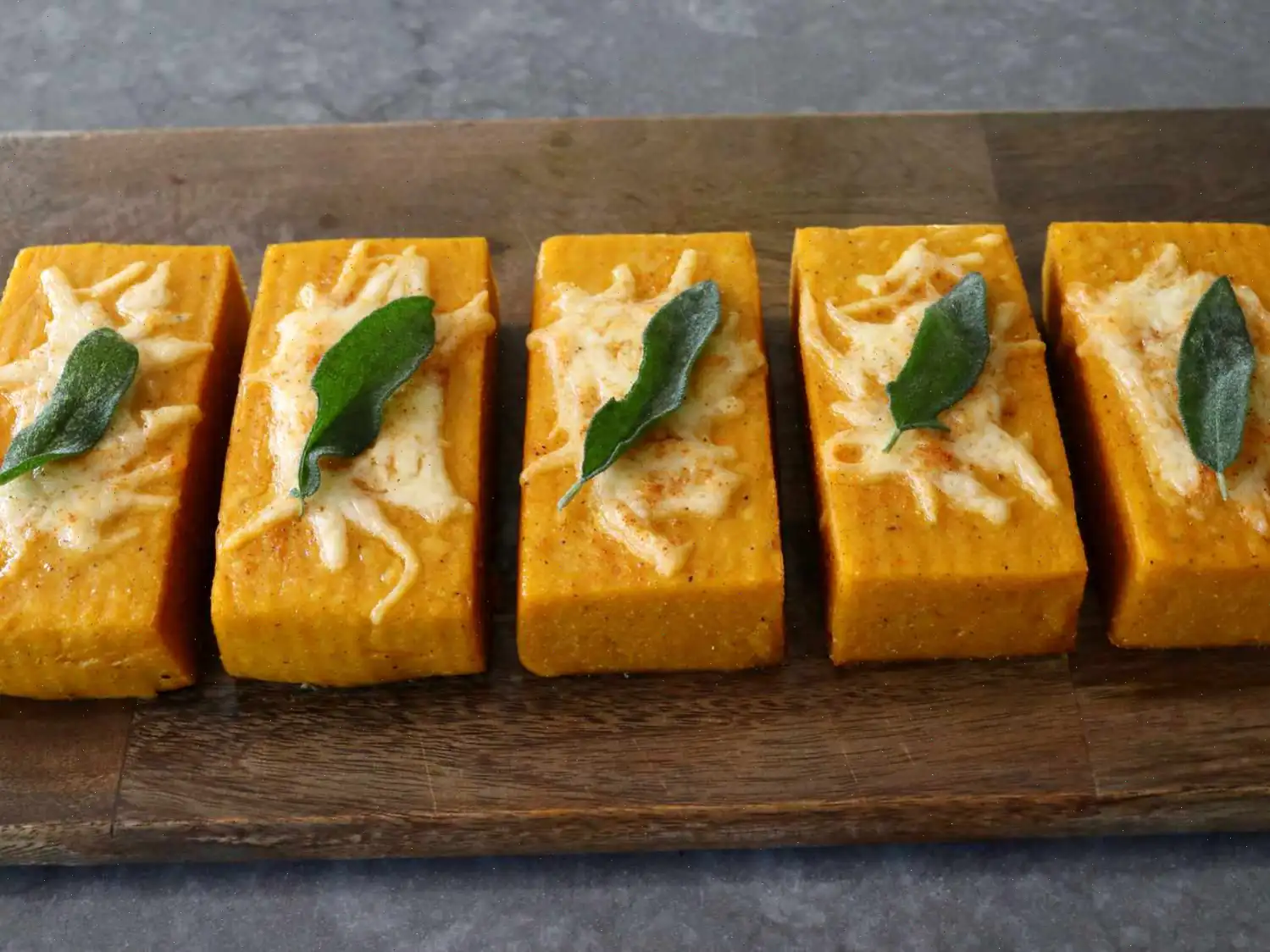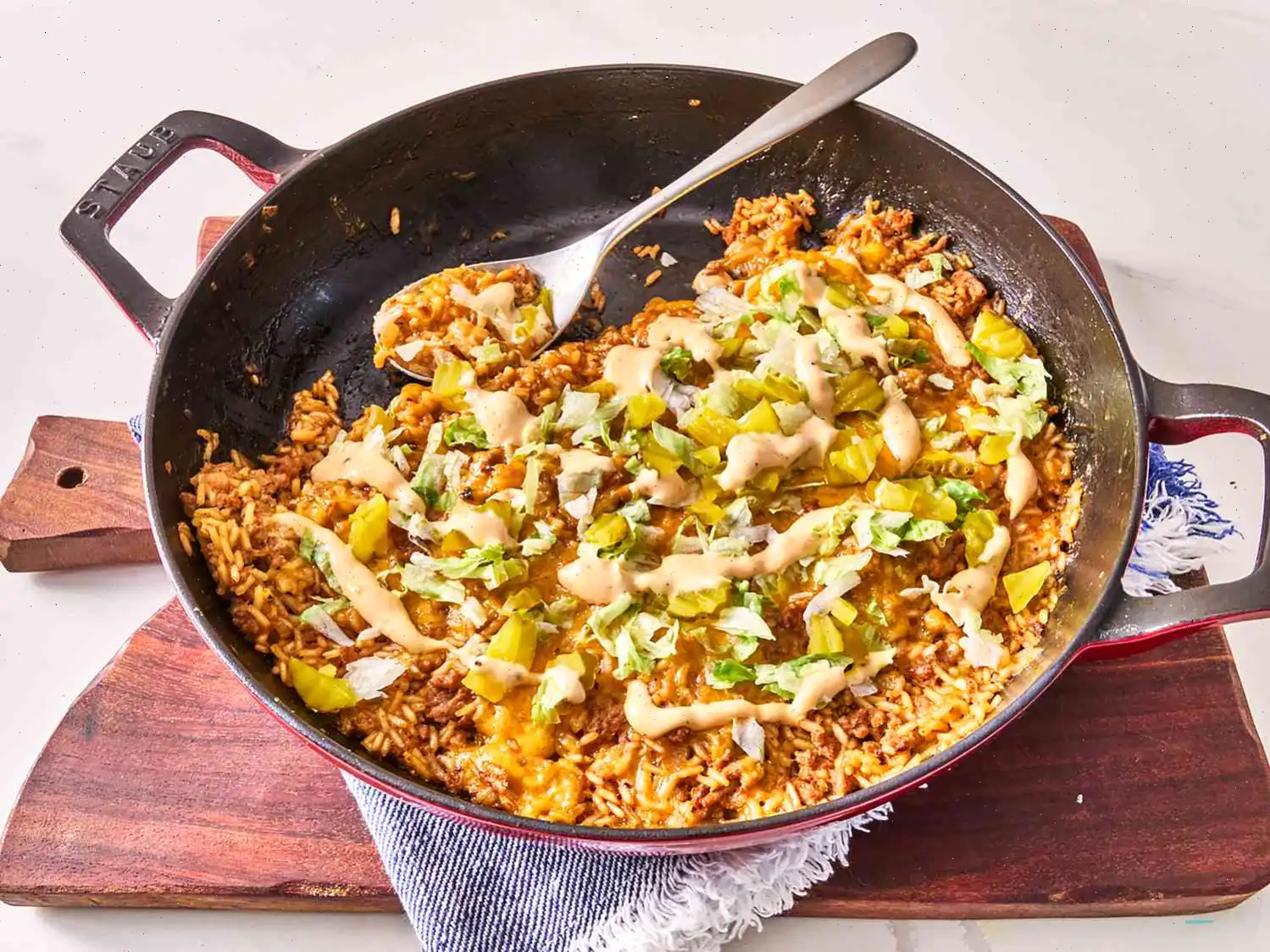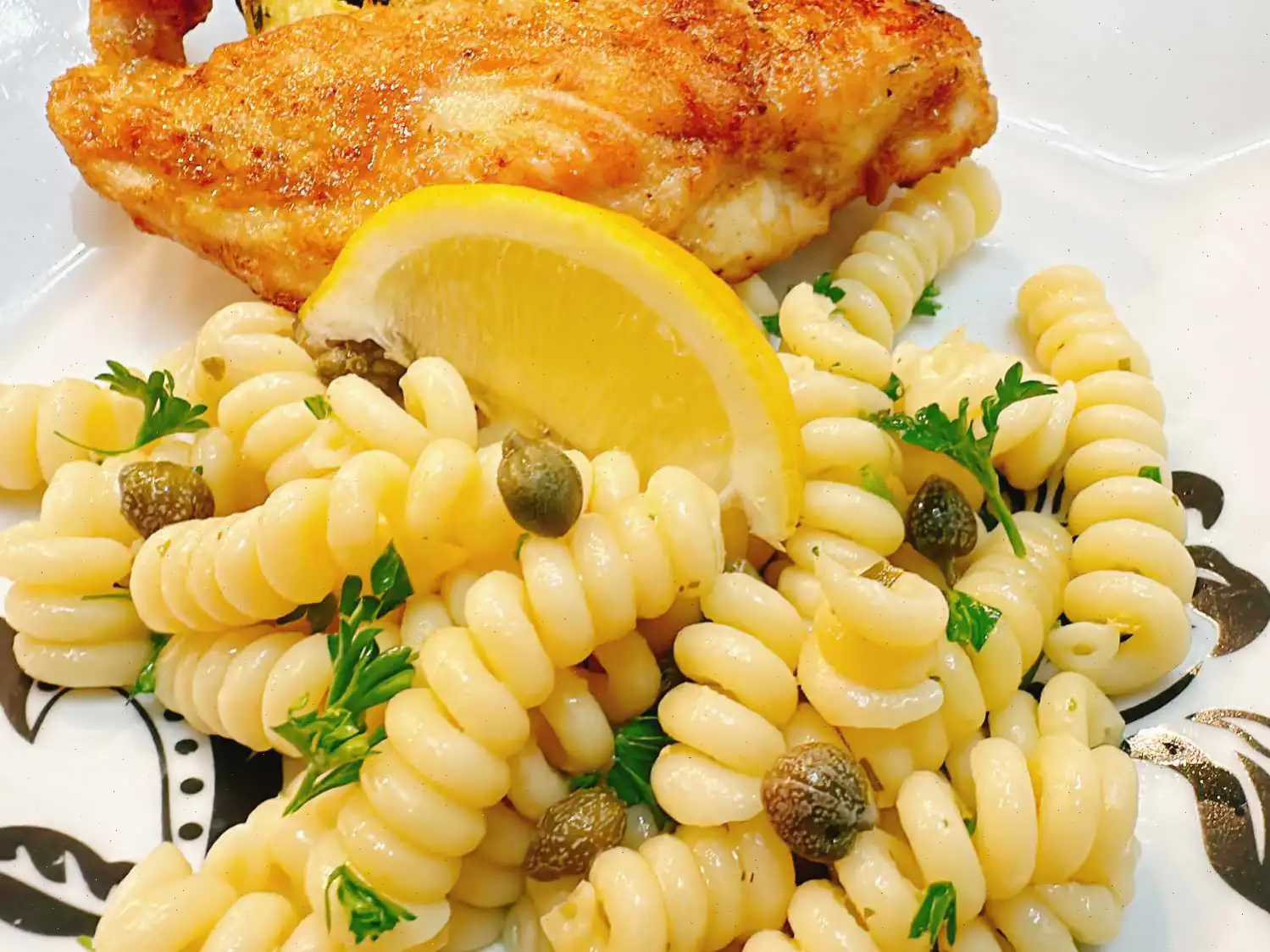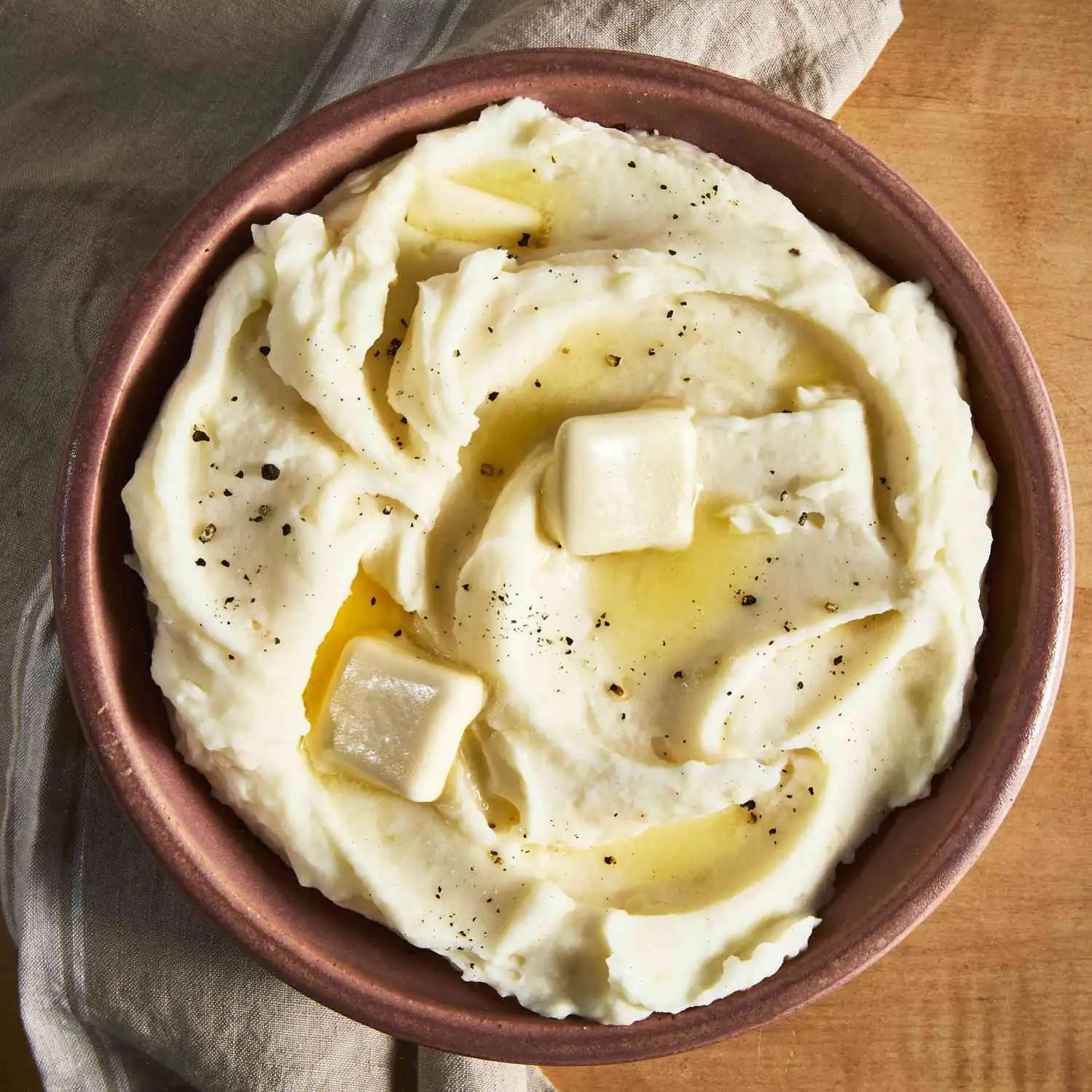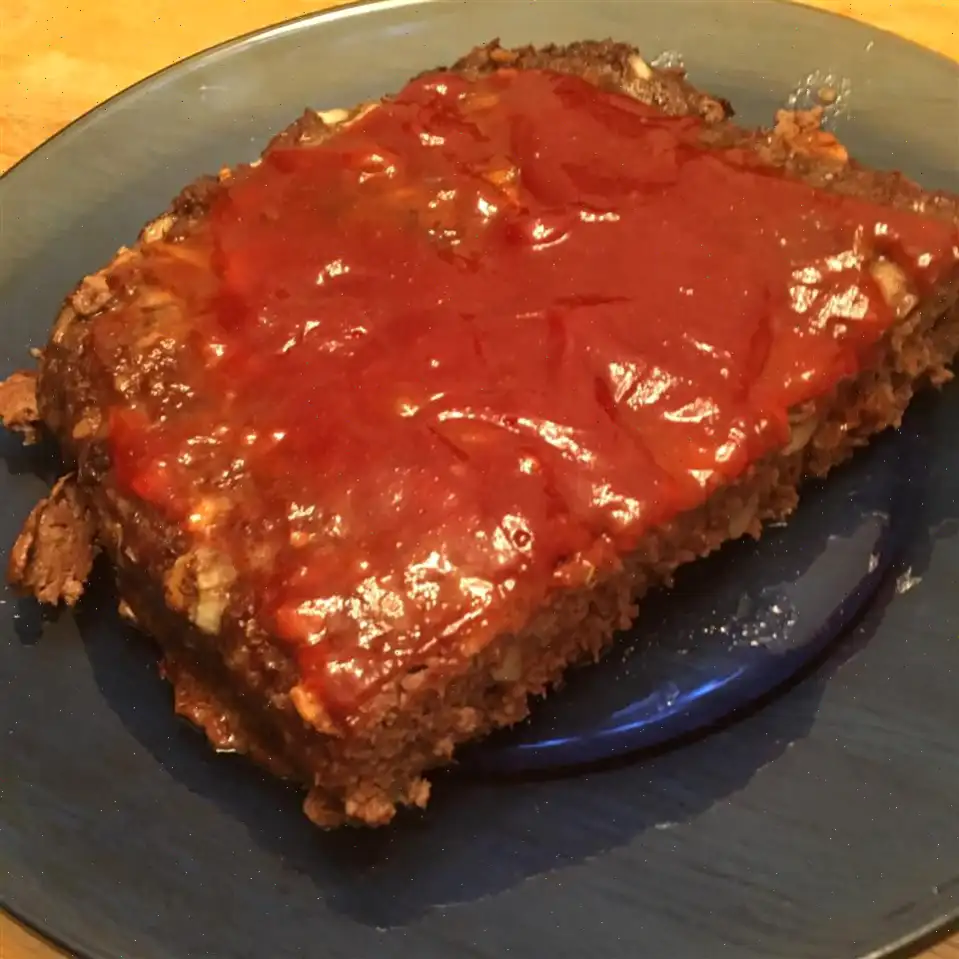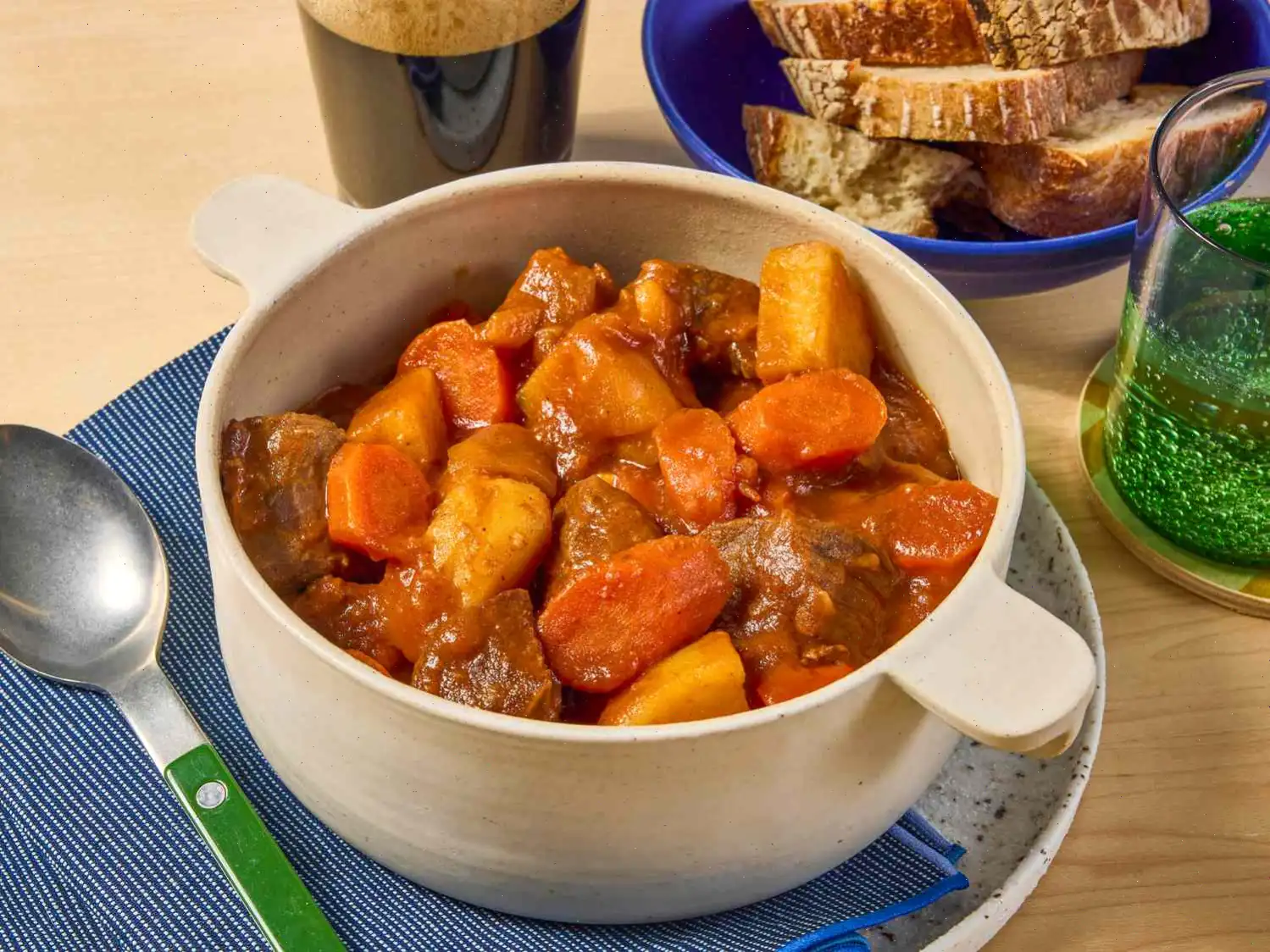
Baked Pumpkin Polenta Recipe
Its that time of year again when pumpkin starts sneaking into everything. Inspired by this seasonal craving, I created a delicious and visually stunning baked pumpkin polenta. The texture of this dish is perfect, and even if you choose to skip the pumpkin, the technique for baked polenta is a must-learn for any cook. It's a bit of a magic trick something that starts out soft and runny transforms into a firm, satisfying texture once chilled and baked. I encourage you to try it out soon, whether as a side or a main dish. Enjoy!
Ingredients (for 8 servings)
- 2 tablespoons olive oil
- 2 tablespoons butter
- 8 to 10 fresh sage leaves
- 1 (15 ounce) can pumpkin puree
- 5 1/2 cups water
- 1 1/2 teaspoons kosher salt (or to taste)
- 1/2 teaspoon freshly ground black pepper
- 1 1/2 cups finely ground yellow cornmeal
- 1 pinch cayenne pepper (optional)
- 1/4 cup milk
- 1 1/2 cups grated Parmigiano Reggiano or pecorino cheese
- 2/3 cup grated Monterey Jack or mozzarella cheese
Directions
- In a saucepan set over medium-high heat, add the olive oil and butter. Once the butter is melted, toss in the sage leaves. Fry them for about 20 to 30 seconds, until they turn dark green and stop bubbling. Remove the sage leaves and place them on a paper towel-lined plate. Set them aside for later garnish. The fried sage leaves can be stored in the fridge for future use.
- In the same pan, add the pumpkin puree and pour in the water. Turn the heat to high and whisk the mixture until it comes to a boil. Season with salt and pepper to taste.
- Once the mixture is boiling, slowly sprinkle in the cornmeal while whisking constantly to prevent clumps. Reduce the heat to medium-low and continue cooking, stirring occasionally, for about 25 minutes, until the polenta is creamy and smooth, with no grittiness left.
- Turn off the heat and stir in the cayenne pepper (if using), milk, and Parmigiano Reggiano cheese. Whisk thoroughly until the mixture is evenly combined.
- Generously grease a 9x9-inch cake pan with olive oil and spread the polenta mixture evenly in the pan. Let it cool to room temperature, then cover and chill it in the refrigerator for at least 3 hours.
- Preheat the oven to 425F (220C). Once the polenta has chilled and firmed up, carefully invert it onto a cutting board and cut it into 8 equal portions.
- Transfer the polenta pieces to a lined baking sheet. Top each portion with a generous amount of grated Monterey Jack cheese and, if desired, sprinkle the tops with paprika or cayenne pepper for an extra kick.
- Bake the polenta in the preheated oven for about 30 minutes, or until its heated through and the edges are golden-brown.
- Once baked, garnish each piece with the fried sage leaves and serve immediately. Enjoy your delicious, crispy-edged baked pumpkin polenta!
Nutrition Facts (per serving)
- Calories: 277
- Total Fat: 16g (20% Daily Value)
- Saturated Fat: 7g (37% Daily Value)
- Cholesterol: 33mg (11% Daily Value)
- Sodium: 679mg (30% Daily Value)
- Total Carbohydrate: 25g (9% Daily Value)
- Dietary Fiber: 3g (12% Daily Value)
- Protein: 11g (21% Daily Value)
- Vitamin C: 2mg (3% Daily Value)
- Calcium: 268mg (21% Daily Value)
- Iron: 2mg (10% Daily Value)
- Potassium: 232mg (5% Daily Value)
* Percent Daily Values are based on a 2,000 calorie diet. Your daily values may be higher or lower depending on your calorie needs.
The Story Behind Baked Pumpkin Polenta
Baked pumpkin polenta is a modern twist on the traditional Italian cornmeal dish known as polenta, which dates back centuries. Polenta was originally a staple food in Northern Italy, particularly among rural populations, who relied on cornmeal as an affordable and versatile ingredient. The addition of pumpkin transforms the dish, giving it a subtle sweetness and creamy texture while maintaining the rustic comfort of classic polenta.
Regional Characteristics
This dish has strong ties to Northern Italy, where polenta is often served as a side dish or base for hearty stews and roasted meats. In regions like Lombardy and Veneto, variations of polenta include cheeses, butter, and occasionally seasonal vegetables. The baked version with pumpkin is less traditional but has gained popularity in Tuscany and Emilia-Romagna, where cooks experiment with seasonal produce to elevate familiar comfort foods.
How It Differs From Similar Dishes
Unlike traditional stovetop polenta, which is soft and served immediately, baked pumpkin polenta is first cooked, chilled, and then baked. This technique allows the polenta to hold its shape while developing a lightly crisp exterior, creating a contrast between the soft, creamy interior and the golden-brown edges. The addition of pumpkin also sets it apart from other polenta variations, introducing a subtle sweetness and earthy depth that differentiates it from purely savory versions with only cheese or herbs.
Where It Is Typically Served
Baked pumpkin polenta is commonly served in Italian restaurants during autumn and winter months, often as a side dish to roasted meats, pork stews, or mushroom ragouts. Its appealing presentation also makes it suitable for holiday meals, family gatherings, or upscale dinner parties. The dishs versatility allows it to function as either a hearty vegetarian main course or a refined accompaniment to more complex entrees.
Interesting Facts
- Polentas origins date back to Roman times, but corn was introduced to Europe from the Americas in the 16th century, which transformed the dish into the version we know today.
- Baked polenta was historically used to make polenta squares or cakes that could be fried or baked, a technique revived in this pumpkin variation.
- Using pumpkin puree not only enhances flavor but also increases the dishs nutritional content, adding fiber, beta-carotene, and vitamin A.
- Fried sage leaves as a garnish are a classic Italian touch, adding a crisp texture and aromatic note that complements the creamy polenta.
- This dish demonstrates the magic of culinary transformation: a runny, soft mixture becomes firm enough to slice and bake while retaining its creamy interior.
You can listen to this recipe in AI audio format. Simply click the play button below to listen to the content in a format that suits you best. It’s a great way to absorb information on the go!
FAQ about Baked Pumpkin Polenta Recipe
Comments
Carolyn Gomez
10/07/2023 05:51:24 PM
I absolutely adored the smooth, creamy texture and delicate hint of sage flavor in this dish. Using an 8 x 8 baking dish made it easy to remove. I paired it with a delicious Italian pork stew.
Larry Gomez
06/22/2024 10:02:17 AM
Adding a savory pumpkin dish to Thanksgiving dinner was a delightful change from the usual pie! The subtle flavors of pumpkin and corn paired perfectly with the rich cheese and fragrant sage leaves.
Margaret Williams
10/20/2023 11:41:23 AM
I didn't make this dish myself, but my son prepared it for us when we visited him last week. It was not only delicious but also beautifully presented. He mentioned that the recipe was from Chef John. It was so good that as soon as I got home, I watched the video and printed out the recipe to make it tomorrow. I highly recommend trying it! One thing my son did differently was using Masa Harina instead of the recommended nixtamalized version. I believe the nixtamalization process would enhance the flavor even more. Chef, could you please share your thoughts on this?


